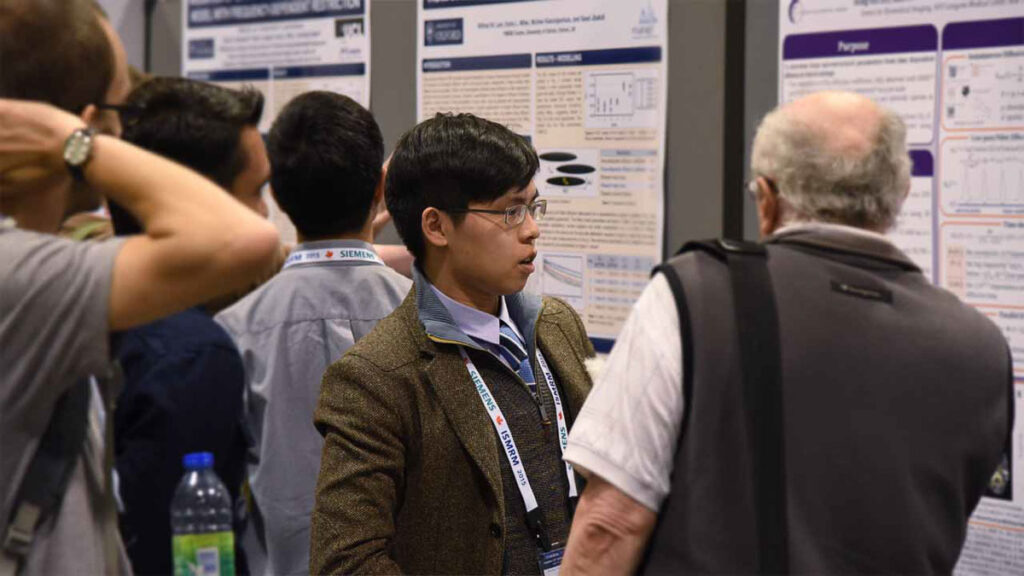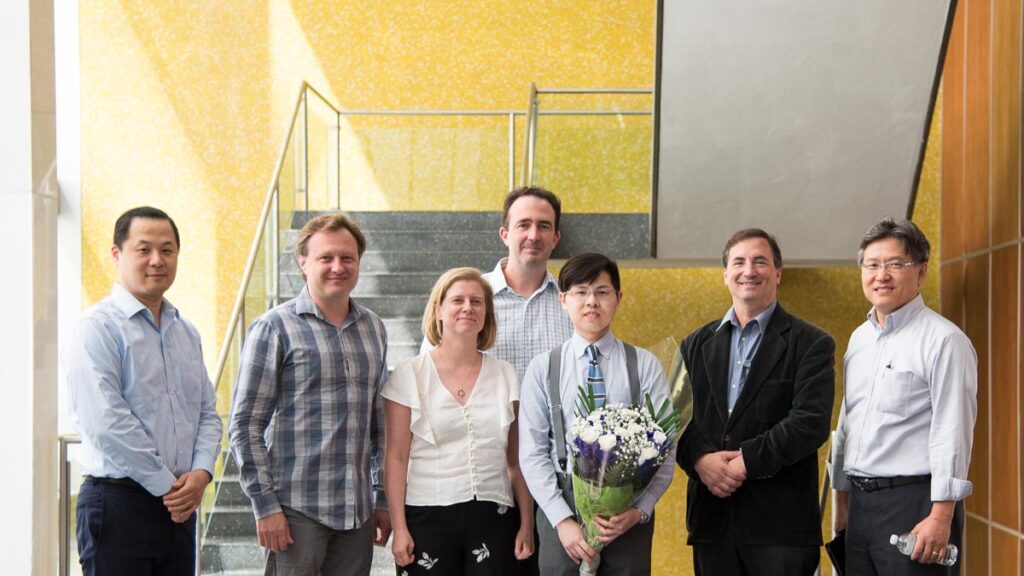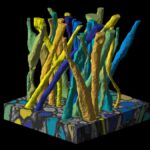On a balmy mid October weekend in 2013, Dmitry Novikov found himself pacing around a hotel conference room in Podstrana, a Croatian town on the eastern shore of the Adriatic Sea, lecturing about diffusion MRI. Novikov, an expert in the probing of physiology and anatomy by sensing how water molecules diffuse through the body, taught the session ahead of a research workshop. He surveyed dozens of scientists as they sweated through exercises he had just assigned.
“When you give them a problem, you have to let them suffer,” said Novikov on a recent call, explaining his pedagogy. “Even if they haven’t solved it, they suffer—that’s important.” Many of the attendees huddled in small groups as they sought each other’s help. But one person stood out as altogether free from anguish.
“This Asian guy, very modest, very quiet, sitting off by himself, does these problems faster than everybody else,” Novikov said. “And always correct.” At one point in the session, the modest attendee brought up Langevin dynamics, a probabilistic method that makes use of stochastic differential equations to model molecular motion. Much to Novikov’s consternation, the attendee identified himself as a master’s student. “I was like, what? What are you doing? Where are you from?”

Hong Hsi Lee had long been familiar with the kind of problem-solving that Novikov relishes. Eleven years earlier, Lee—then a high school senior in Taiwan—travelled to a resort town of Nusa Dua on the southern tip of Bali, Indonesia, to compete with hundreds of peers in the 2002 international physics olympiad. He returned with a gold medal, which doubled as guaranteed admission to any of Taiwan’s universities. But there was a wrinkle: Lee’s parents had let him compete in Indonesia under the condition that he would enroll in medical school. They “convinced me that after going through medical training I would love, or at least not hate, being a doctor,” said Lee. After earning a seven-year MD at National Taiwan University (NTU), he stayed for two more years to major in physics.
Following a compulsory year in the military, where he served as a medical officer, Lee returned to NTU to pursue a master’s and began looking for doctoral training in an area of fundamental inquiry with implications for medicine. A book about nuclear magnetic resonance microscopy piqued his interest in diffusion MRI, and he traveled to Podstrana to learn more about the field—that’s what landed him in Novikov’s classroom.
Lee’s taciturn disposition, youthful features, and refined sartorial sensibility lend him a trim, enigmatic air. By contrast, Novikov is casual, direct, and jovially sardonic—yet he sensed a kindred spirit. Together with Els Fieremans, a diffusion expert who also taught that weekend in Podstrana, he had just launched a microstructure imaging research group. The two scientists invited Lee to apply to the Biomedical Imaging & Technology PhD Training Program at NYU Grossman School of Medicine.
Lee’s pre-doctoral curriculum vitae guaranteed him options among well-reputed institutions in the U.K. and the U.S. The graduate program at NYU had only just awarded its first PhD the year before.

Seeking perspective, Lee cold-emailed Taiwan’s sole Nobel laureate, Yuan T. Lee (no relation), who responded with an hour-long phone call and advocated going to the U.S., where he said training takes longer but leads to greater independence. Additional counsel came from Lee’s graduate advisor at NTU, Wen-Yih Isaac Tseng. “When he learned that the lab at NYU is led by Dan Sodickson, that was it,” recalled Lee. “You have to go there.”
Lee’s arrival in New York in the fall of 2014 coincided with the founding of the Center for Advanced Imaging Innovation and Research (CAI2R), which includes the microstructure research group. At first, language barrier emerged as an unexpected obstacle for Lee, who felt overwhelmed by the sheer variety of English spoken in the lab—a gamut of accents from at least 25 countries. He knew that “time would solve this,” he said, but how much time?
Novikov started Lee on a diet of scientific papers about effective medium theory, a framework for studying systems of composite matter through representative constituents in ways amenable to empirical confirmation; meanwhile, Fieremans trained him in the arcana of MRI experiments and validation methods. To alleviate loneliness, which Lee called “another big enemy in PhD life,” he frequented Manhattan’s ballroom dance studios. He got into the habit of setting aside a few weeks in late summer for what he called “crazy projects,” which he delved into while his principal investigators were away on vacation. After three years, Lee began having dreams in English. He said, “That’s when I could communicate fluently.”
Lee’s graduate research with our Center’s microstructure group has aimed at unlocking cellular-level information about the brain through novel biophysical modeling and image processing methods. Together with colleagues, he has investigated a phenomenon called diffusion time-dependence as a window into properties of grey and white matter. He noticed that tools used by MRI researchers for modeling biological tissue were often not based on the particular physical characteristics of the cellular environments in question. This bothered Lee. To a physicist, the value of an idealization lies in its correspondence with the underlying phenomenon. If the degree of such correspondence is unknown, one is not really dealing with a model, let alone a useful one (this philosophy will ring familiar to anyone who follows research manifestoes coauthored by Novikov).

To develop diffusion models rooted in the unique features of the brain’s microenvironment, Lee marshaled the apparatus of effective medium theory, meticulous MRI measurements, and vanguard approaches to validation. His work has led to the first successful use of Monte Carlo simulations to create detailed maps of three-dimensional microgeometry of axons. The feat formed part of his doctoral dissertation advised by Fieremans and Novikov and defended in 2019. “I call it the microstructure simulation trilogy,” Lee said, referring to papers that detail these advances.
By this point, Lee had overcome the two obstacles that had loomed over his early years in New York. He became a valued voice in the group’s free-form, say-what-you-think meetings. And he got married.
Apart from mastery of advanced theoretical tools and specialized experimental methods, Lee has shown creativity and range that extend to the other end of the imaging process. Most recently, he has worked with colleagues to create innovative extensions of artifact removal, denoising, and super-resolution imaging. Research papers documenting these techniques are forthcoming, Lee said. He called them an “image processing trilogy.”
Related Stories
Santiago Coelho, postdoctoral fellow who develops diffusion MRI methods for brain imaging, talks about modeling tissue properties, entering the field by chance, and what he proposes to do next.
Scientists at NYU Langone Health show that MRI signal can detect axonal features long assumed to lie beyond the reach of magnetic resonance imaging.


